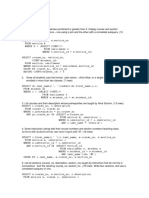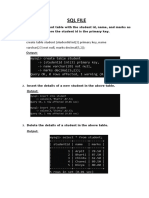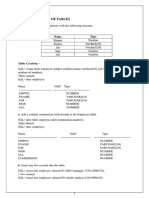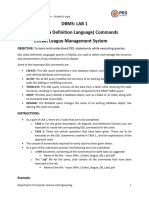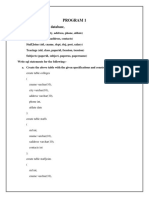0% found this document useful (0 votes)
4 views4 pagesSQL Subquery Student
The document provides an overview of subqueries in SQL, detailing various types such as simple, multi-row, correlated, and nested subqueries, along with practical examples for each type. It also includes practice exercises and questions related to SQL views, demonstrating how to create views for student data, course information, and grades. Additionally, it presents challenge questions that encourage further exploration of SQL functionalities.
Uploaded by
k.mala31169Copyright
© © All Rights Reserved
We take content rights seriously. If you suspect this is your content, claim it here.
Available Formats
Download as PDF, TXT or read online on Scribd
0% found this document useful (0 votes)
4 views4 pagesSQL Subquery Student
The document provides an overview of subqueries in SQL, detailing various types such as simple, multi-row, correlated, and nested subqueries, along with practical examples for each type. It also includes practice exercises and questions related to SQL views, demonstrating how to create views for student data, course information, and grades. Additionally, it presents challenge questions that encourage further exploration of SQL functionalities.
Uploaded by
k.mala31169Copyright
© © All Rights Reserved
We take content rights seriously. If you suspect this is your content, claim it here.
Available Formats
Download as PDF, TXT or read online on Scribd
/ 4











